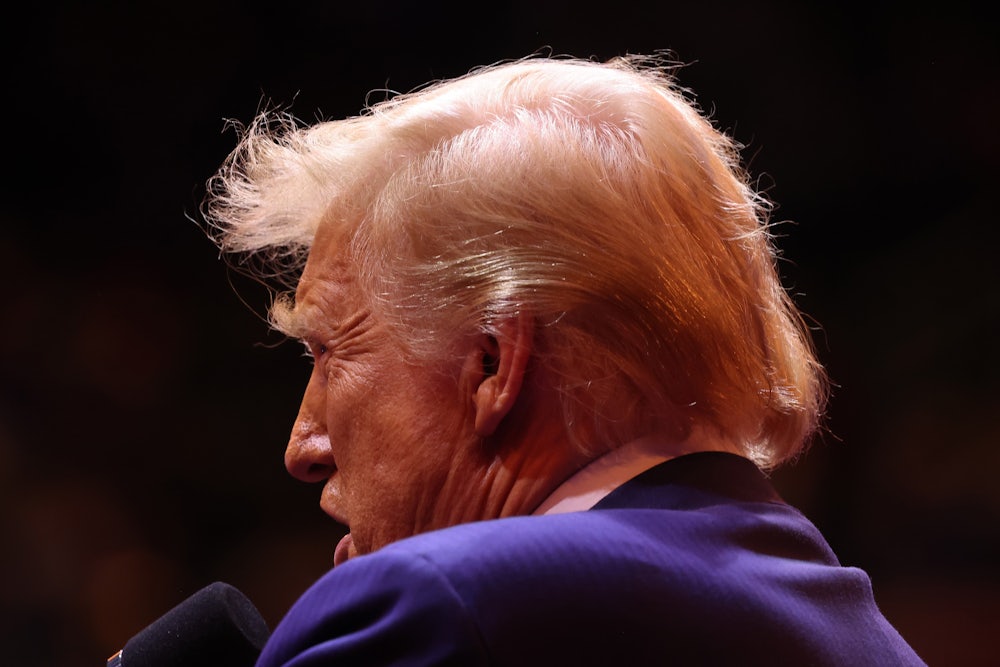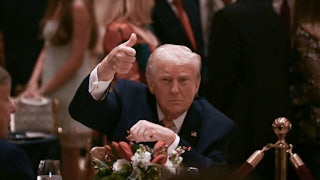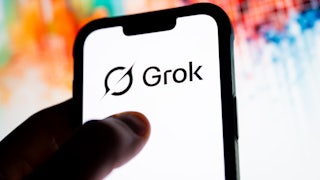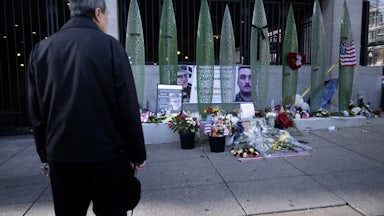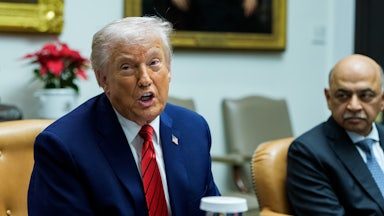Billed as a “closing statement,” Donald Trump’s Sunday rally at Madison Square Garden was an orgy of hate. David Rem, a childhood friend of Trump’s, called Kamala Harris “the Antichrist,” in what may have actually been the least offensive attack in the entirety of the six-hour rally. Businessman Grant Cardone insinuated the vice president was a “prostitute,” while radio host Sid Rosenberg called her husband a “crappy Jew.” Tucker Carlson said she had “Samoan Malaysian low IQ” before praising Trump for providing “liberation” from feeling obligated to tell the truth. Tony Hinchcliffe, a third-rate insult comedian, made “jokes” about Puerto Rico (“a floating island of garbage”) and Latinos (who “love making babies. There’s no pulling out. They come inside, just like they do to our country”) that were so offensive that they prompted the rarest thing in contemporary American politics: a statement from the Trump campaign distancing itself from them.
In the lead-up to the rally, social media was full of reminders that the American Nazi Party had held an infamous event in Madison Square Garden’s predecessor in 1939. The Trump rally lived up to that billing. It was a closing argument of unvarnished bigotry and hate, one that showed that the MAGA movement has become so much bigger than the man who founded it.
Coverage of the rally has been refreshingly blunt: Even The New York Times, which has been reluctant to use such language, referred to it as “A Closing Carnival of Grievances, Misogyny and Racism” in one headline. What stands out, though, is how little Trump has factored into coverage. Yes, he eventually appeared onstage, giving a long, rambling, and only periodically coherent speech that focused on his campaign’s only real theme: that the United States is now a country “occupied” by immigrants. But Trump’s presence was largely immaterial. The story of the event was about how widely his message of hate has spread, from some of the most powerful people in media to the richest man in the world. The rally was a literal and frightening representation of how fundamentally Trump has changed American politics—and how drastically he may change it yet, if he and his deeply loyal, increasingly extreme Army of Grievance and Retribution return to the White House in January.
The Donald Trump who spoke on Sunday was not the Donald Trump who barnstormed across the country in 2015 and 2016. He was raspy and quiet; he struggled to hold onto thoughts for more than a few seconds. Breaking from his prepared remarks constantly, he rambled and wheezed out a dystopian and fascistic vision for the country. If the old Trump was a force of nature—a darkly charismatic figure—this was something notably diminished.
Trump’s campaign message in 2024 has mostly been reactive and, in sharp contrast to 2016 and 2020, shaped by outside figures and groups. The overall vision, to the extent that it exists, has largely come from elsewhere—from his running mate, JD Vance, and outside organizations like the Heritage Foundation that have been preparing for a return to power since 2020. Vance, meanwhile, has pushed conspiracy theories about migrants taking over cities and eating animals—and Trump has then adopted them.
The story of Trump’s first term was also, to some extent, about outside influence. Then it was about restraint. Trump’s first Cabinet was a mishmash of older conservatives and newer, more reactionary figures. For every Steve Bannon and Stephen Miller, there was an establishment stalwart—someone like Trump’s first secretary of state, Rex Tillerson, or chiefs of staff like Reince Priebus and, later, John Kelly. The story of Trump’s first term was one of the establishment—and the guardrails it enforced—slowly melting away. Now we are getting a picture of an administration that is purely reactionary.
But Trump’s Madison Square Garden rally was also a portrait of the culture of total impunity and bigotry that he has engendered. What was being celebrated in New York on Sunday was Carlson’s version of “liberation.” It was a political culture that was freed of any form of decency. There were no efforts to suggest that nonwhite Americans were Americans—or, for that matter, that they were even human. Instead, it was pushed again and again that anyone who didn’t look or act exactly the way that Trump and Carlson and Vance thought they should was animalistic, deserving of whatever horrors would be unleashed upon them should Trump return to the White House. That enemies list, just per the rally itself, is long: Blacks, Latinos, Jews, women, and liberals—anyone who would even consider voting for Kamala Harris, really.
Trump has given permission to all of this. He does plenty of it himself, to be clear. But what is obvious now is that the movement he leads has its own momentum and set of priorities. Trump is no longer crucial to it. All that matters is gaining power—whether it be through Trump or someone else—and then using it to crush anyone who would stand in their way.
